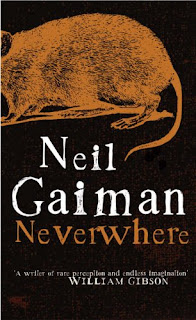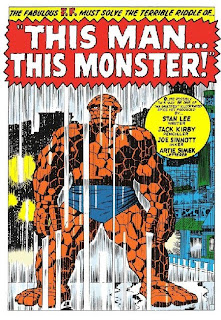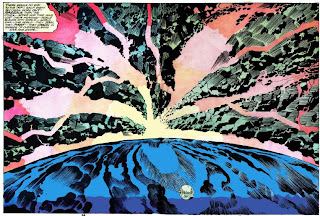#3 Mike Mignola
I don't remember when it was exactly. I just remember sitting in bed, reading
Wizard, seeing the cool guy with the trench coat and goggles.

Yes, I thought they were goggles. Many people did.
Regardless, it would have been years ago.
In those days, the only access to comics I had was via gas station magazine racks. They weren't found in my hometown gas stations either. Only on road trips with my family could I find comics. There was also a cardboard box filled with old comics given to me by an older kid who felt he had grown out of them. That was where the issue of Wizard came from: already a few years old by the time I read it. So really,
Hellboy wasn't new. Hellboy wasn't exactly an established property like it is now, but it wasn't new. However, it was new to me. Probably the first non-superhero comic I was aware of, and I couldn't even page through it because what interstate gas station would have copies of
Dark Horse comics.
It wasn't until years later, my freshman year in college. I had weaned myself off comics previously, but just like any habit, it found its way of getting back into my life. It was during this period that I was finally exposed to Hellboy. The first movie was going to be out in a few months, and
Seed of Destruction already had the big sticker advertising that fact on the cover. Maybe I was a poser for reading a series because it was being made into a film, but in actuality, I wanted to uncover that mystery presented to me in my early adolescence. I wanted to find out what that trench-coated guy's deal was.
Spoiler Warning: Hellboy isn't wearing goggles. They're horn stubs, sanded down to prevent unnecessary goring.
***
Mike Mignola cut his artistic teeth drawing pages for the Big Two. At Marvel, he did projects like
Alpha Flight and
Rocket Raccoon. At DC, he was allowed to play with some of the higher profile characters, such as Batman in
Gotham By Gaslight or Superman in
Cosmic Odyssey.




Yet Mike never felt entirely comfortable drawing these titanic characters. He grew up reading
HP Lovecraft and
Robert E Howard, and was more interested in folklore and ghost stories than masks and secret identities. Really, Hellboy was his dream project, and the fact that Dark Horse let him do it was a phenomenal break, considering how finicky an audience can be towards stories that are far removed from capes and criminals. But he did it. Mike made Hellboy. And people rejoiced. Later, Hellboy became a franchise, spinning off tertiary stories about
Abe Sapien, the
BPRD, and even the "mythical"
Lobster Johnson.



***
At a time where many fans were growing ill of continuous exploration of the superhero expanse, Hellboy shone like a beacon in the dark. It acted as a sigil granting other artists the confidence to go ahead with their own stories, regardless of how lacking it was of spandex. What started out as a small, creator written and drawn story, has become a multi-tome epic that has not only spawned two feature length films, but also numerous spin-off books. Many artists, independent or otherwise, cite Mike Mignola and Hellboy as inspiration for their own titles. All of this, and it still continues to feel fresh with each new story arc.




Mike Mignola did not change his style of drawing to conform to industry standards. He did not write the same stories that had constantly been seen as best sellers. Mike Mignola went against the grain, and persevered. Mike Mignola did all this, and he was all the better for it.
Lesson Learned: Do what you want, and the fans will come to you.

















































